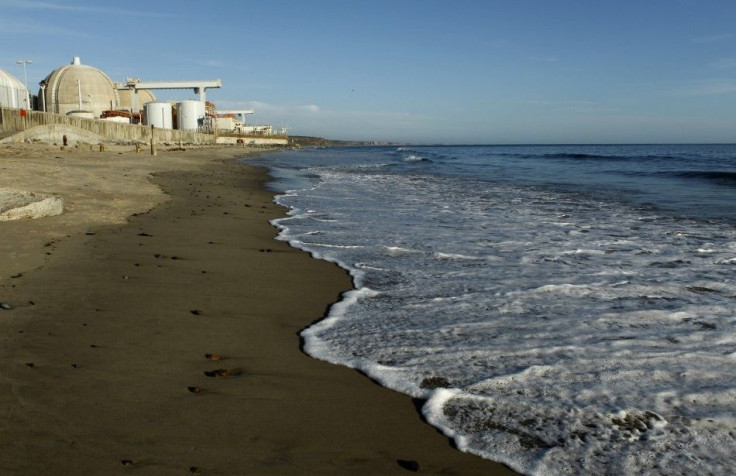U.S. Nuclear Stance Unchanged for Now Despite Japan Crisis

Nuclear power will continue to be a part of U.S. plans for power generation even as a nuclear crisis unfolds in Japan in which authorities are trying their best to prevent a meltdown at a plant on the nation's eastern coastline, a top official said on Tuesday.
Nuclear Regulatory Commission Chairman Greg Jaczko said on Tuesday that nuclear plants in the U.S. continue to be designed to a very high standard for seismic and tsunami-type events, but efforts might be made to explore the differences between Japanese and U.S. nuclear standards and what changes may need to be made sometime in the future.
We will look at whatever information we can gain from this even and see if there are changes we need to make to our system, Jaczko said during a press conference at the White House.
The quake in northeastern Japan on Friday has been upgraded to a 9.0 magnitude temblor, up from a magnitude of 8.9. In addition, some reports have reported tsunami waves in Japan as high as 33-feet high.
Japan's Fukushima No. 1 nuclear power plant about 60 miles south of the city of Sendai was able to withstand the impact of the earthquake, however the subsequent tsunami caused damage to backup power systems that were meant to cool the nuclear reactors at the plant.
Japanese authorities are currently in the process of attempting to cool the reactors, although concerns remain about a meltdown. Such an event involves nuclear fuel rods melting and eventually breaching the plant's containment protections, releasing radioactive material into the environment.
Jaczko said that the U.S reviewed tsunami requirements for nuclear plants in the wake of the 2004 tsunami affecting nations around the Indian Ocean triggered by a major quake and, in fact, went and made sure that our plants would be able to deal with that type of event.
When asked if plants in the U.S. would be able to withstand an 8.9 magnitude quake similar to the one Japan experienced last week, Jaczo said I don't want to speculate on anything like that at this point.
At this point what I can say is we have a strong safety program in place to deal with seismic events that are likely to happen at any nuclear facility in this country, he said.
He was also asked about the worst case scenario in Japan - a meltdown of the nuclear power plant at Fukushima - and if harmful radiation could reach Hawaii or the West Coast.
I don't want to speculate on the various scenarios, but based on the design and the distances involved, it is very unlikely that there would be any harmful impacts, he said.
Deputy Secretary of Energy Dan Poneman said on Tuesday at the same press conference that nuclear energy is seen by the Obama administration as a very important component to the overall portfolio we're trying to build for a clean energy future.
He said the U.S. currently has 104 operating reactors providing 20 percent of U.S. electricity.
So we do see nuclear power as continuing to play an important role in building a low-carbon future. But be assured that we will take the safety aspect of that as our paramount concern, he said.
White House spokesman Jay Carney said nuclear power remains a part of President Barack Obama's overall energy plan.
Jaczko said that the agency he heads, as an independent agency would change its policies if the information available warranted it.
So if we do get information that would cause us to take action, we will take action. But at this time, we don't have any information that would cause us to do anything different with our approach with the current reactors, he said.
California's Coastline Nuclear Plant
In California, one coastline nuclear power plant in San Onofre, located between Los Angeles and San Diego, was built to withstand a 7.0 magnitude earthquake and has 30 feet high walls, according to Southern California Edison spokesman Gil Alexander.
He said that before bulding the plant the company did an assessment of the best science available to discover the maximum credible threat we faced.
The maximum earthquake expected at the area was a 6.5 magnitude quake so we overbuilt, he said. The same principle applied when building a wall to protect against a tsunami, he added. While waves as high as 24 feet to 25 feet were expected, he said the company built a wall 30 feet high.
Markey asks for Moratorium
Rep. Ed Markey, D- Mass. on Monday said the U.S. should impose a moratorium on all new reactors that could be place in seismically active areas until a review of design resiliency, emergency response, backup power to prevent a meltdown during long electricity outages, and evacuation plans has been conducted.
Federal agencies have not yet developed a coordinated plan for a nuclear disaster, Markey said in a letter to Obama released publicly.
He said that while the Oil Pollution Act in the United States was made into law following the Exxon-Valdez disaster, the U.S. should not wait for a nuclear disaster to plan a Federal response.
While the Federal Emergency Management Agency and Nuclear Regulatory Commission have Radiological Emergency Response Plans, he said it is not clear that these plans extend to long-duration accidents that extend over large land areas or involve large populations, he said, citing a July 27, 2010 Draft Report to the Congress of the Presidential Commission on Catastrophic Nuclear Accidents.
Markey said, citing the Commission, that there was no planning for such a possibility as an evacuation on the scale of the 135,000 people permanently evacuated following the Chernobyl meltdown. He noted that 200,000 people had already been evacuated from the area around the threatened reactors in Japan.
© Copyright IBTimes 2024. All rights reserved.





















